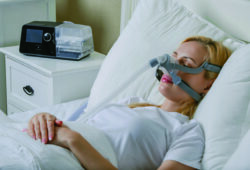Mitigating the risks of cost increases
Over the last few years, healthcare operators have experienced unprecedented risk to supply cost increases, and the spend on laundry and linen is no exception. Laundry and linen services refer to the supply of clean, sanitized medical linens such as bedding, gowns and scrubs, whether laundered in-house or outsourced to a third party. According to the American Reusable Textile Association, laundry services can account for up to 3% of a hospital’s entire budget.

“The first step in managing a reasonable linen supply expense is negotiating a strong contract,” shares Trevor Rotondo, Director of Strategic Sourcing at HealthTrust. “Once that is in place, behavioral stewardship creates the efficiencies that reduce costs beyond the contract.”
Members who manage these programs often ask how their facility’s pricing compares to others, what the benchmarks are, and where they should be price-wise. “The answer is … that depends,” explains Rotondo. “There are many factors that go into pricing, including the type of program and the linens chosen.”
While laundry and linen services are optional purchased services contracts, there are benefits to working with suppliers contracted by HealthTrust. “We have the category and subject matter expertise to help members navigate the many options that comprise this complex category,” Rotondo says. HealthTrust is a valuable resource for members—from supporting a review of an existing program to benchmarking the program against those of other suppliers.
Factors impacting price
A number of supply disruption factors have impacted these laundry and linen programs during the pandemic and the inflationary period that followed. Pricing for some members has remained flat while others have experienced increases.
The cost of linen is directly impacted by the price of cotton. Cotton increased about 30% from the fall of 2020 through early 2022. Its reinjection accounts for more than 20% of a provider’s linen supply expense. In choosing a higher-quality linen—one with a higher cotton content—costs are going to increase. While on one hand, higher quality means higher cost, on the other hand, it can positively impact patient satisfaction scores and thus yield an increased Medicare reimbursement. So, it is important to consider what is more important to the hospital. Higher-quality linens tend to last longer and result in reduced reinjection costs over time.
Operators have the option of outsourcing the rental of linens (supplier provided) or the laundering of Customer Owned Goods (COG) versus in-house laundry processing of the COG. Outsourced supplier costs are based on volume and distance—the greater the volume traveling and/or the shorter the distance, the lesser the rate. An onsite laundry may make financial sense for a low-volume, remote hospital, whereas a million pounds/year hospital within 20 miles of a supplier may spend more resources managing an in-house program with less buying power than suppliers managing programs for multiple hospitals.
Waste & loss
“Once you have identified a program, a spec and a supplier,” explains Rotondo, “it is time to identify efficiencies; opportunities to reduce initial cost projections and measure them month over month.” The two most impactful behavioral factors inflating linen supply expense are waste and loss.
Waste happens when operators neglect the importance of establishing volume control of the number of towels, sheets and blankets brought into patient rooms. Once left in a room, unused linens may be collected as soiled and laundered again. “Loss is always going to happen, but don’t be discouraged,” says Rotondo. “It can be reduced through proper linen management. Identify what is an acceptable loss, and work to reduce loss spend.” The 20% industry standard on linen reinjection includes both normal wear and tear and loss replacement combined. If replacement costs exceed 20%, there is an opportunity to improve loss behavior.
Loss starts with training and retraining—no linens go into waste, no need to hoard excess linens, etc. Also, consider instituting an EMS linen program of reduced-quality linens used for patient transport, as they will likely never return.
The key to mitigating linen supply expense is to continually track behavioral metrics and review what worked as well as what did not.
To get control of your laundry and linen services, connect with us here. If you are a current HealthTrust member, contact your Account Manager for more information or email us at evs.sourcing@healthtrustpg.com.
Share Email On-contract service, Operations, Q3 2023





